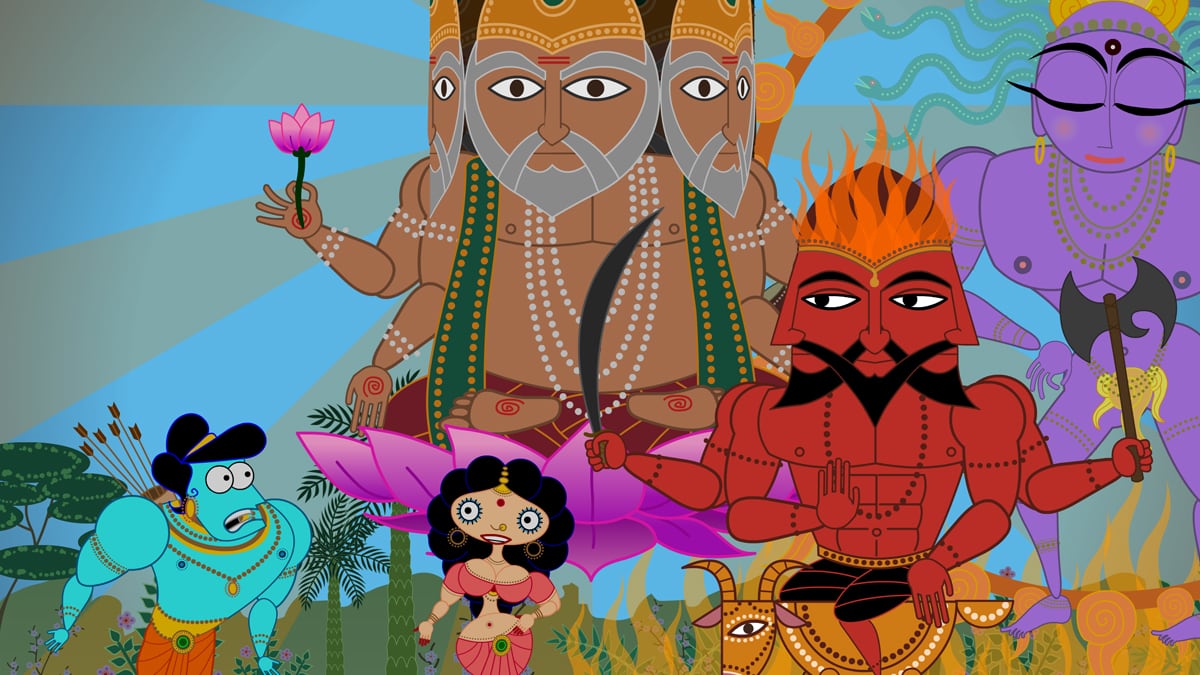Something unremarkable was going to happen on the evening of July 21 at Richmond Hill, a suburb in the diverse New York borough of Queens, where an 82-minute animation film called Sita Sings the Blues was going to be screened at the Starlight Pavilion. The film has been shown thousands of times around the world, including at the Tribeca Film Festival, the Museum of Modern Art, in Greenwich Village in New York, and at festivals and galleries abroad. Since its release two years ago, it has won several awards, including a special mention at the Berlin Film Festival. Drawing on the Sanskrit epic, Ramayana, the film tells the parallel story of an American animator whose marriage breaks down in India, but who finds inspiration from the life of Sita, the queen at the center of Ramayana. Protest letters arrived immediately. The part of Queens where the film was being shown has a substantial South Asian population, and many of the residents are Caribbean Americans of Indian origin.
Rohan Narine, a 26-year-old real estate broker who is a Guyanese Hindu, has been trying since April to screen the film in his area, and had to change the venue twice. His first choice was Shri Trimurti Bhavan in Ozone Park, a temple where his uncle is a priest. But when his uncle saw the film, he didn’t like it—particularly because in the animation film, Sita appears somewhat buxom. Besides, he didn’t like the language, or the fact that some characters were from Brooklyn. On July 20, the latest venue—Starlight Pavilion—developed cold feet as the protest emails crossed the 1,000-mark, each carrying nearly identical text.
An organization that calls itself Forum for the Hindu Awakening protested the film. The emails called the film denigrating and insulting, and said freedom of expression cannot be absolute. A worried Pastor Mathew John, who owns the pavilion, decided to cancel the screening.
Nina Paley, the New York-based filmmaker behind the movie, was disappointed: “Tyrants only have power if you give it to them. Unfortunately, the Starlight Pavilion chose to give their power to bullies and canceled the screening. I’m rather shocked that something like this could happen in this day and age, in New York.”

Narine decided to screen it at his parents’ home, where dozens of curious viewers, many of them Caribbean of Indian origin, turned up, and the film was followed by what Aseem Chhabra, a writer whose voice appears in the film, described as an enthusiastic discussion. Clearly, the Forum does not speak for all Hindus in America, or even in New York. Narine finds the film inspiring, and told a reporter: “For the record, I really enjoyed the film, and took the opinion that the West Indian community should see it and judge for themselves, not take another organization’s opinion and make it their own. All works of art are open to interpretation.”
He isn’t alone: Sunita Viswanath, board member at the non-profit Women for Afghan Women, told me: “Attacking this film is an act of such ignorance and small-mindedness when Hinduism is expansive and lends itself to unlimited questioning by its adherents. As a Hindu raised by devout Hindu parents and raising three Hindu sons, I have to say that the people who have a problem with Sita Sings the Blues do not represent me. In fact, Sita Sings the Blues is a wonderful way to keep Hindu mythology alive.”
Hindu restiveness over representation of the faith in Western culture has grown over the years. A year ago, Burger King in Spain used an image of Lakshmi, the Hindu goddess of wealth, in promotional posters inside three restaurants. Several Hindu groups in the United States protested by writing to Burger King and publicizing their protest on the Internet, stressing, among other things, that Lakshmi’s image should not be used to sell hamburgers because most Hindus are vegetarians. As if on cue, on July 21 a group of Hindus succeeded in getting their case admitted in the New Jersey Appellate Court, after samosas that they had ordered at a diner turned out to be meat-based, and not vegetarian—after they had explicitly told the waiter to serve them vegetarian samosas. (Samosas are spicy, fried savories, with vegetable or meat stuffing.) As compensation, the 16 Hindus want the diner to pay for their pilgrimage to the north Indian town of Haridwar, where they would take a dip in the holy River Ganga, to mark an ablution ritual to wash down their sins. The case is continuing.
Past targets have included pop star Madonna for sporting a bindi, a decorative dot, on her forehead—which married Hindu women traditionally wear. Rock group Aerosmith came in for criticism over a 1997 CD cover for its album Nine Lives, in which the Hindu God Krishna’s face was replaced with that of a cat. So too an episode in the TV series Xena: Warrior Princess where the princess seeks Krishna’s help to fight rivals.
The man behind some of the complaints is Rajan Zed, president of the Universal Society of Hinduism. In 2007, he was invited to offer a Hindu prayer at the U.S. Senate, and since then he has used his fame to express opinions as an aggrieved Hindu, guarding his faith. Several groups in the United States have organized themselves to run such campaigns—these include, besides the Forum for the Hindu Reawakening, the Texas-based Vedic Foundation, the Hindu Anti-Defamation Coalition and the Hindu Education Foundation. In Britain, the Hindu Human Rights Forum has campaigned against art works that the organization claims depict Hinduism in a poor light.
The trend is even touching the academy. The Vedic Foundation and the Hindu American Foundation have challenged California’s state education board over its curriculum, and in 2003 some 2,000 Hindus signed a petition to the Library of Congress to oppose the nomination of Romila Thapar, a distinguished Indian historian, to the Kluge Chair for the Countries and Cultures of the South, because she is supposedly critical of Hindus and soft on Muslims. The library ignored Thapar’s opponents. Other academics like James Laine of Macalester College and Paul Courtright of Emory University have been criticized for their depiction of historical and mythical Hindu figures.
Hindus had stayed away from identity politics, but noticing that other faiths are able to attract attention by challenging text, interpretations, films, books, music, and imagery, they have begun to show their assertiveness. Instead of earning respect, these activists are being seen as an annoyance, and far from projecting the image of Hinduism as a tolerant, liberal faith, they make it look like other faiths its adherents claim to be different from. This is competitive intolerance.
Rather than embrace the United States and its First Amendment guarantees of freedom, these Hindu activists are into competitive intolerance, and want things banned because they feel they aren’t getting enough attention.
But they can’t win against Sita. Paley is a fervent critic of copyright laws, and believes in copyleft, meaning that it is legal for anyone to screen it or distribute it without permission.
Indeed, Aseem Chhabra, New York-based critic who appears as a voice of one of the characters in the film, says: “What they don’t realize is that Nina already had developed this amazing strategy of making the film available to anyone who wants to see it. So I won’t be surprised that the teenage kids and other reasonable adults in this community may have already seen the film on YouTube or downloaded it for free from the film’s website. The screening can be canceled, but people in Richmond Hill and Ozone Park still have ways to see it. So Nina has already won this battle a long while back!”






